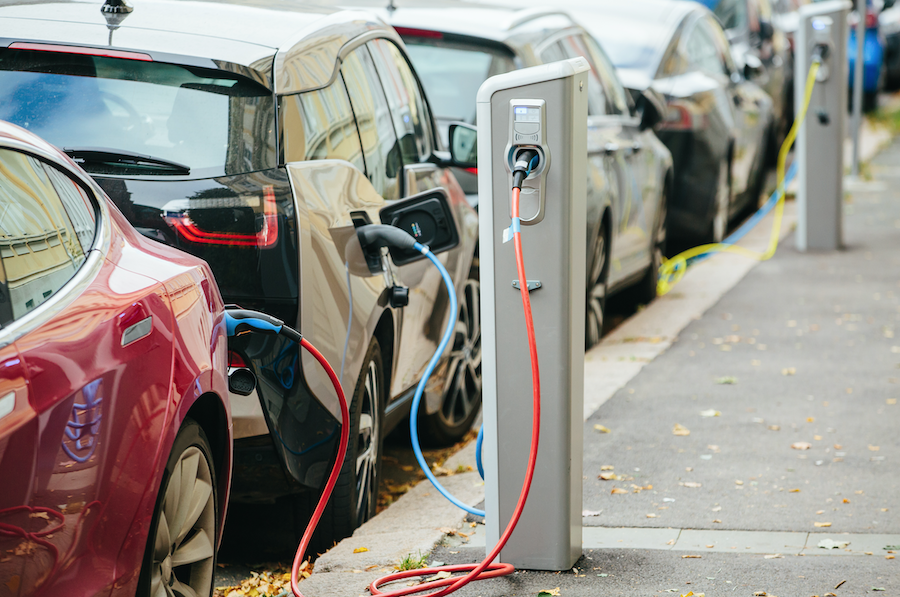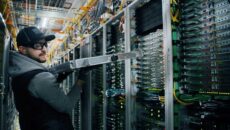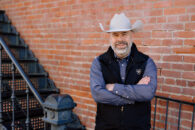Irl Scissors, the executive director of Electrify Missouri, sat down with Missouri Auto Dealers Association (MADA) executive director Doug Smith to discuss electric vehicles in Missouri.
Below is the conversation between Scissors (IS) and Smith (DS) with answers edited for clarity and style only.
IS: What is the mission of MADA?
DS: We are essentially the advocate for new car dealers in the state of Missouri. Our main task is monitoring regulatory and legislative activities that affect the retail auto market and new car dealers across the state of Missouri. MATA’s been around for about 85 years. And we have about 99 percent of all new car dealers within our membership. We have several pre-owned car dealers as well, independent dealers, but for the most part, we’re tasked with being the advocate for the new car dealers across the state.
IS: We’re here today to talk about electric vehicles (EV) and what their impact is in the Missouri market. What does the market for EVs in Missouri look like?
DS: It’s small but growing. I’ve been doing this for about 16 years, and over the last five or six years, we’ve really seen interest grow in ownership of electric vehicles.
Of the original equipment manufacturers, there are 40 of them that do business in Missouri. Everything from Fiat to Bugatti, they are all interested in or exploring the options of creating an electric vehicle fleet. A lot of manufacturers have decided they are going to go all electric. GM made the decision to do that by 2035; Honda is looking at doing it by 2030. So there are a lot of manufacturers that are taking the approach that electric is the future of the automobile. The internal combustion engine will slowly be phased out over the next 25 to 30 years and I think there is a trickle-down effect at least on the interest side for Missouri consumers. More people are interested in exploring EV ownership than ever at this point in time.
IS: As car makers transition to EVs, how do the dealerships prepare for this? I mean, they have mass inventories of gas-powered vehicles, etc.?
DS: There will be a lot of things internally that will be required by the manufacturers. Dealers are already retrofitting or outfitting their dealerships with charging stations. In the past three or four years, they had one charging station at their locations; now some will have up to three or five at their location — not just to charge their fleets, but to support vehicles for interested customers and for travelers that may be passing through, so now they have an option to charge at a General Motors dealership or a Ford dealership. There’s going to be a lot of changes in the way vehicles are serviced; the shift to electric will certainly be impactful for internal combustion-powered vehicles, but it won’t be a complete phase-out yet. Existing gas-powered vehicles will be around for a while, and those technicians that are used to working on these engines will still be needed, but there’s definitely going to be some changes in the way consumer vehicles are serviced.
There are still more questions than answers on how the transition will be completed.
IS: For mechanics, your sales force, and pretty much everyone in the supply chain, is there training? Is there information that they’re getting so that they move beyond internal combustion engines?
DS: That’s an ongoing process. A lot of dealerships that might have a high volume of EV customers may have one or two technicians who are dedicated to EV repairs. A lot of the EV repairs are computer-related, to be done in an over-the-air service. For example, a change to a setting or something in the drive train will be done by digital transmission from the manufacturer or to the vehicle itself. With tires, wheel bearings, your internal parts, power windows — those kinds of things — you are still going to need a technician to do those kinds of repairs. For battery replacements and issues like that, if your battery expires or it runs out of charging capacity, you’ll have dedicated people in the dealerships who will take care of that. So it’s an ongoing process where workforce development will be critical.
IS: You mentioned that you are seeing, over the last five or six years, more sales and dealerships are preparing for this, but are you seeing EV sales outside of St. Louis and Kansas City?
DS: Yes. When I say more sales, you’re going from a very small number over the last four or five years to still a small number.
But that number is growing, and one of the reasons is more options. I think the last count — and this was probably a month or so ago — there are almost 80 EV options across all manufacturers. Some manufacturers have one or two options; other manufacturers have four or five options. Everything from EV sedans to SUVs.
The thing that’s missing from the market is light-duty trucks which are coming. Ford is the first one on schedule to have an all-electric F-150 which is the most popular vehicle in the state of Missouri in terms of sales. So the interest is definitely increasing and outside of the metro area. I think there are more questions really than answers on whether EV ownership is right for those consumers, because of the lack of charging infrastructure that is available to them outside of the major metro areas of St. Louis, Kansas City, and Springfield.
IS: Do you think that the electric F-150 is going to be a game-changer?
DS: I think it will be. Not necessarily in consumer usage, but I think it definitely changes the narrative. EVs were these small, boxy sedans that are better primarily as a commuter car that has a small range, but when Ford finalizes the EV F-150, they’re talking about a range close to 300-350 miles. They’re talking about no diminishing in pulling capacity, no diminishing in that vehicle being used on a commercial basis by contractors or people who are hauling heavy items. Ford is very deliberate on this right now; they want to make sure they get it right.
And I do think it’s a game-changer as it changes the perspective completely that EVs are just the small, little boxy, four-person vehicles that are designed for traveling within a specified range. It will completely change how small and large businesses look at their vehicle fleets going forward. What is a more economical approach to minimizing their expense for their fleet? Are EVs the way to go, or maybe a mix of EVs and internal combustion engines? Those are the questions that business owners are really going to have to take a hard look at.
IS: You raise another point: What are the customers who your folks are talking to looking at in EVs? What’s most important to them?
DS: I’d say reliability and range. Charging capacity too, but not so much for their home charging network, as I know most of the electric companies are very consumer-centered on this. They offer a number of incentives and have very good information that they’re providing consumers on electrical vehicle purchases. How do I have to modify my home in order to charge that vehicle? There’s a lot of information out there that covers those consumers’ concerns, but the real concern is how far can I go before I have to charge and where can I charge it? Are charging facilities located readily for me? Is it going to cost me to charge? What’s the charging infrastructure in the state of Missouri? Those are the questions, and I think that’s what we’re lacking a little bit because the demand has been so low over the last half a decade. Now that we’re starting to see the increased demand and interest, the charging infrastructure is really going to have to pick up the pace before EVs become commonplace.
IS: Put on your fortune-telling hat and tell us what the EV market will look like in 10 years in Missouri.
DS: My guess, a rough estimate: I would say 45 percent of new car sales will be EVs. I really think that when trucks and SUVs become commonplace as far as EV selection, and with battery technology changing as well, right now they are looking at ways to make solid-state batteries more efficient and more cost-effective. I think the battery technology and the variety of selection for the consumer are going to be the two big things. Solid-state batteries, in everything that I’ve read, have the capacity to go 400 or 500 miles on a charge. I think that once you get to those numbers, anybody who was on the fence about an EV is going to take a very hard look and probably go that way, but we’re still a few years away from it. What I’ve seen since 2012 is a slow, steady, very deliberate increase in EV interest, purchase, and usage that’s going to continue to grow. So in 10 years, you’re looking at 40 or 50 percent of all vehicles on the road will be electric.
Cadillac, for example, is going to go all electric, and Cadillac makes a beautiful vehicle. It’s reliable, it’s aesthetically pleasing, it’s got some of the best technology you can find in a vehicle in terms of interaction with the driver and the passenger. I just think you’re going to see more and more companies make a complete shift. Audi, for example, is talking about making an all-electric fleet; Jaguar, too. A lot of these options are going to be too nice and too interesting for consumers to pass up.
IS: Let’s talk about gas prices for a minute. They are on the rise. It’s travel season, vacation season, road trip season. Do you think that rising gas prices will lead to the sale of more EVs in Missouri?
DS: Oh absolutely. When you see gas prices hit the $3-4 range, interest in EVs will triple. With consumers on their day-to-day budget, it’s a variable that is always going to be in play. If you see a spike in fuel prices to a point where it is a drain on the household disposable income, yes, electric vehicles will definitely be an option and even a stronger option at that point.
IS: And this follows up on the previous question: With the state and federal incentives that are out there right now, I imagine those also contribute to more sales of EVs right now in Missouri.
DS: The federal program, I believe, is a $7,500 tax credit which is very intriguing and very attractive. There are some state incentives as well; I’m not aware of what they are off the top of my head, but they are another enticing aspect that gets folks thinking about EVs where they maybe wouldn’t have been thinking about that four or five years ago.
EM: Last question. How can Missouri better prepare itself as a state for this influx of EVs?
DS: First and foremost, the charging infrastructure has to improve. St. Louis and the metro areas, Kansas City, and parts of southeast Missouri are starting to make strides in those areas. But until we have a very commonplace approach to EV charging, there will still be apprehension at the consumer level until charging stations and fast charging are readily available and the technology improves on those. Right now, if you go to a fast-charging station, it’s still 25 to 30 minutes to get a full charge. If you can whittle that down to 10-15 minutes, I think that’s going to be something that really makes people think about EVs as an option. You know everybody is so time-pressed, there isn’t enough time in the day for everyone to get all their daily activities done, so having 25-30 minutes set aside to charge your vehicle is an obstacle — where right now it takes maybe two minutes to fill your vehicle up with gas. These are things that are going to have to be addressed as well.
But technology is always improving in these areas, and I think that will continue. Until you have a more reliable and plentiful charging infrastructure in the state of Missouri, you’re still going to have some apprehension at the buying level.
With EV infrastructure improvements and EVs becoming more commonplace in the market, those two parallel lines are slowly coming to a point where they’ll intersect. In five years, if we have this conversation again, it’s going to be a completely different landscape when it comes to EV charging and availability.

Irl Scissors serves as Electrify Missouri's executive director. Electrify Missouri seeks to promote the use of electric vehicles and advocate for policies and incentives that encourage the growth of electric vehicle usage and infrastructure throughout Missouri.












